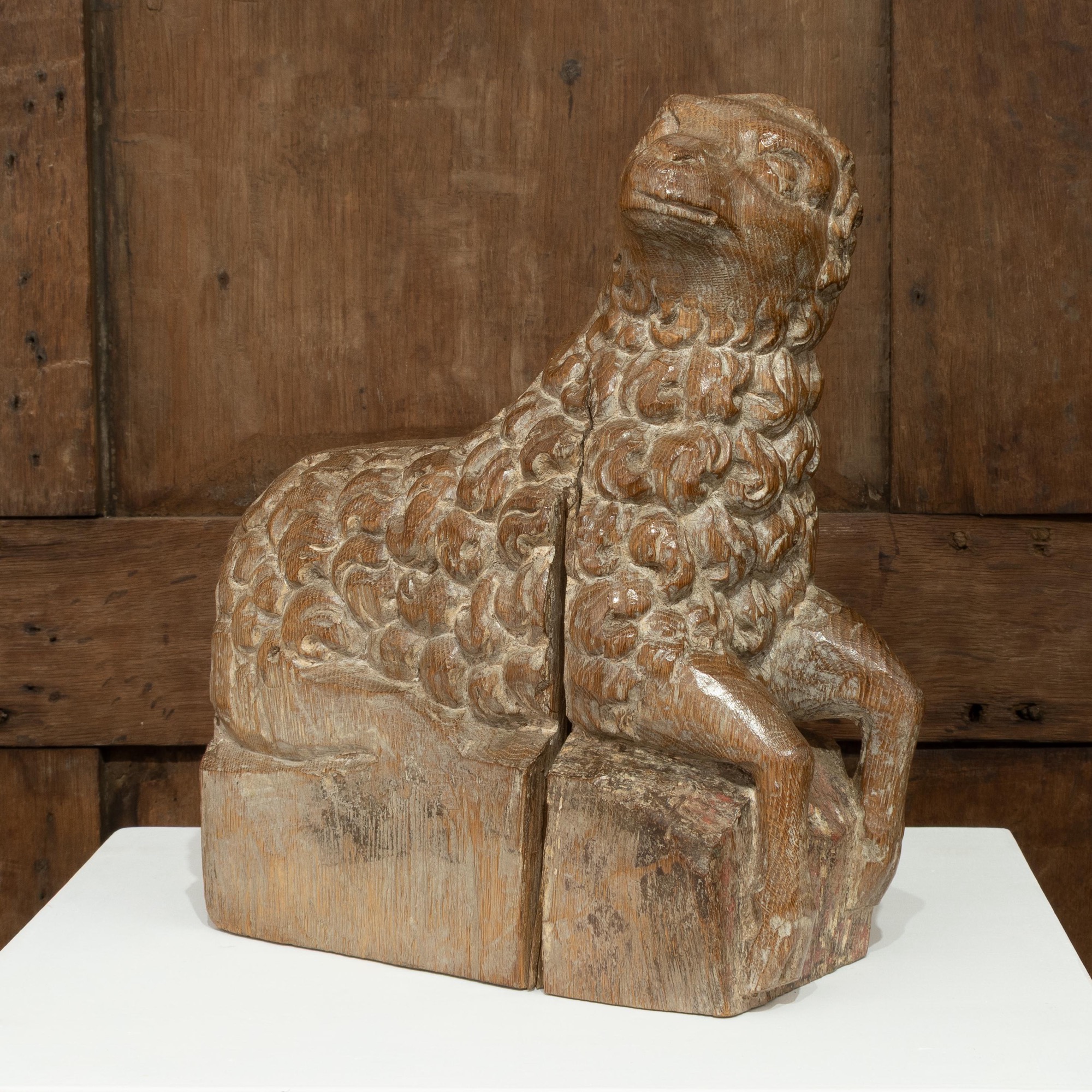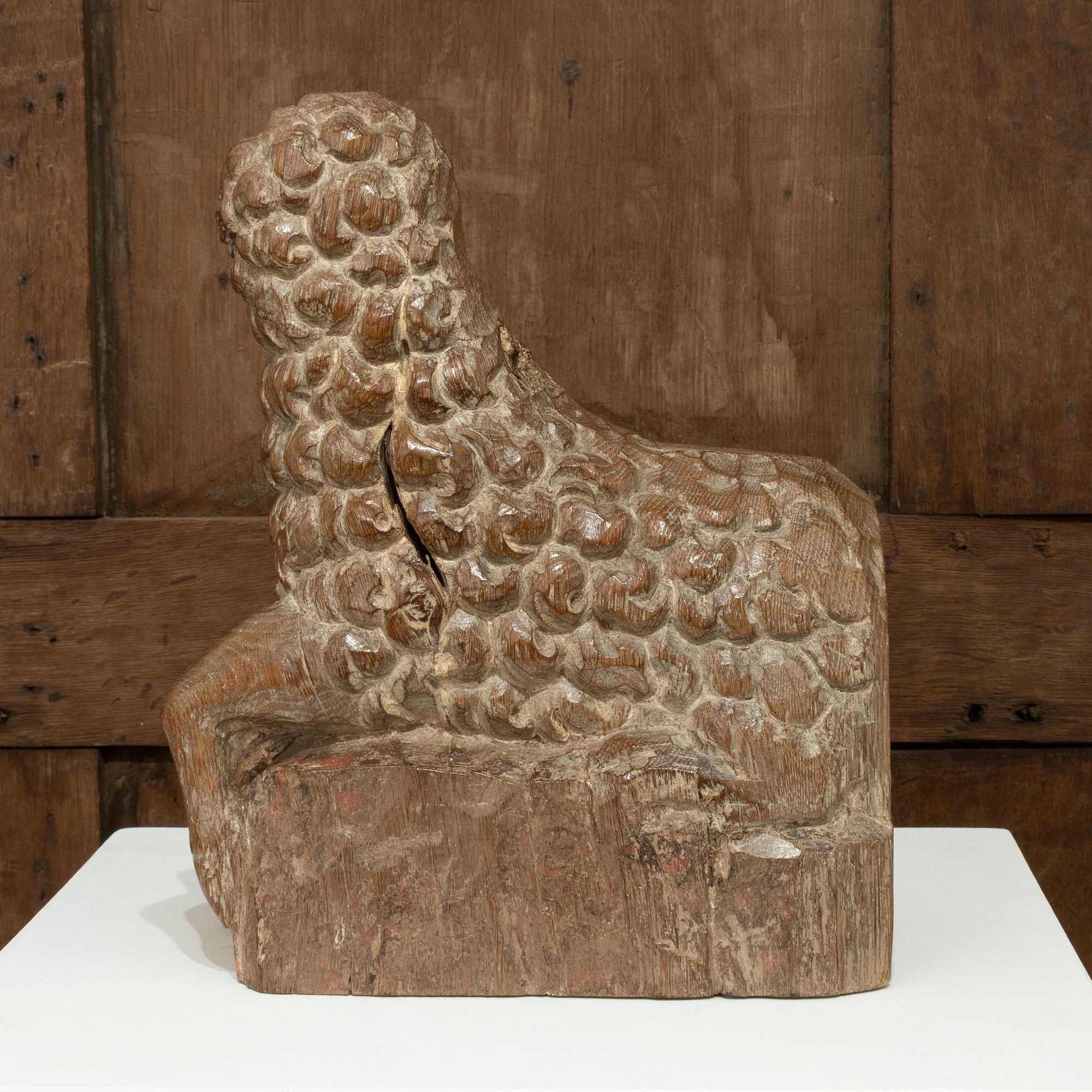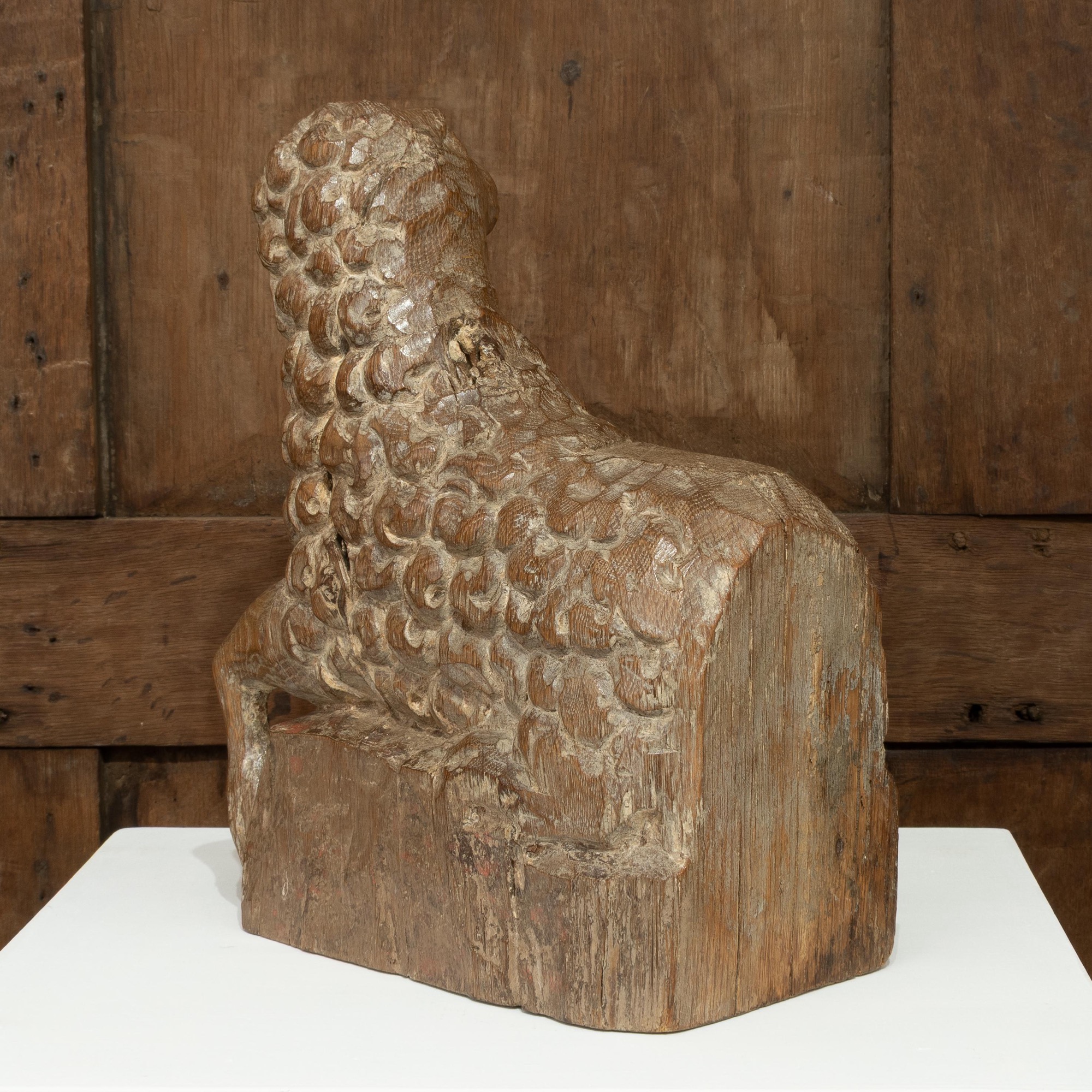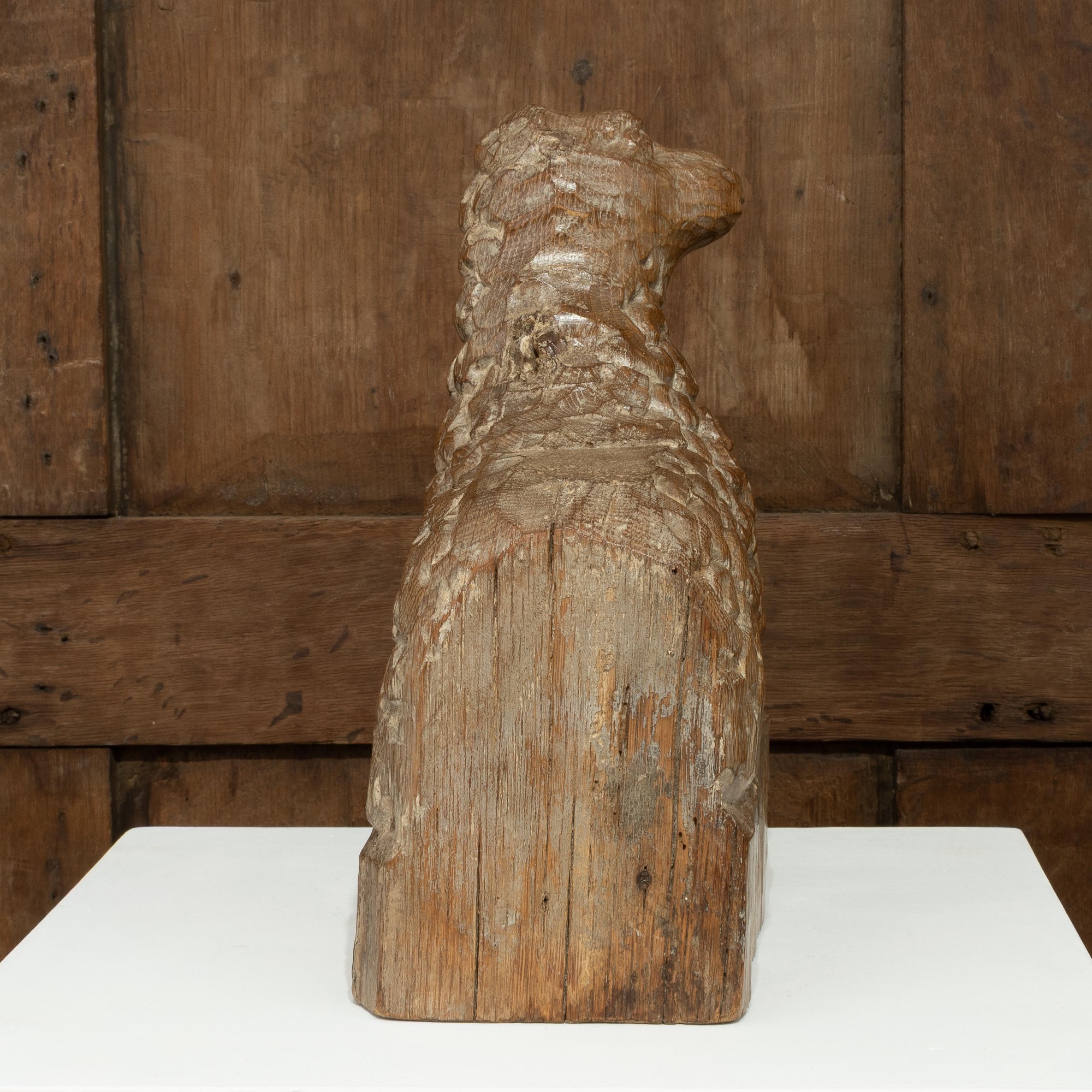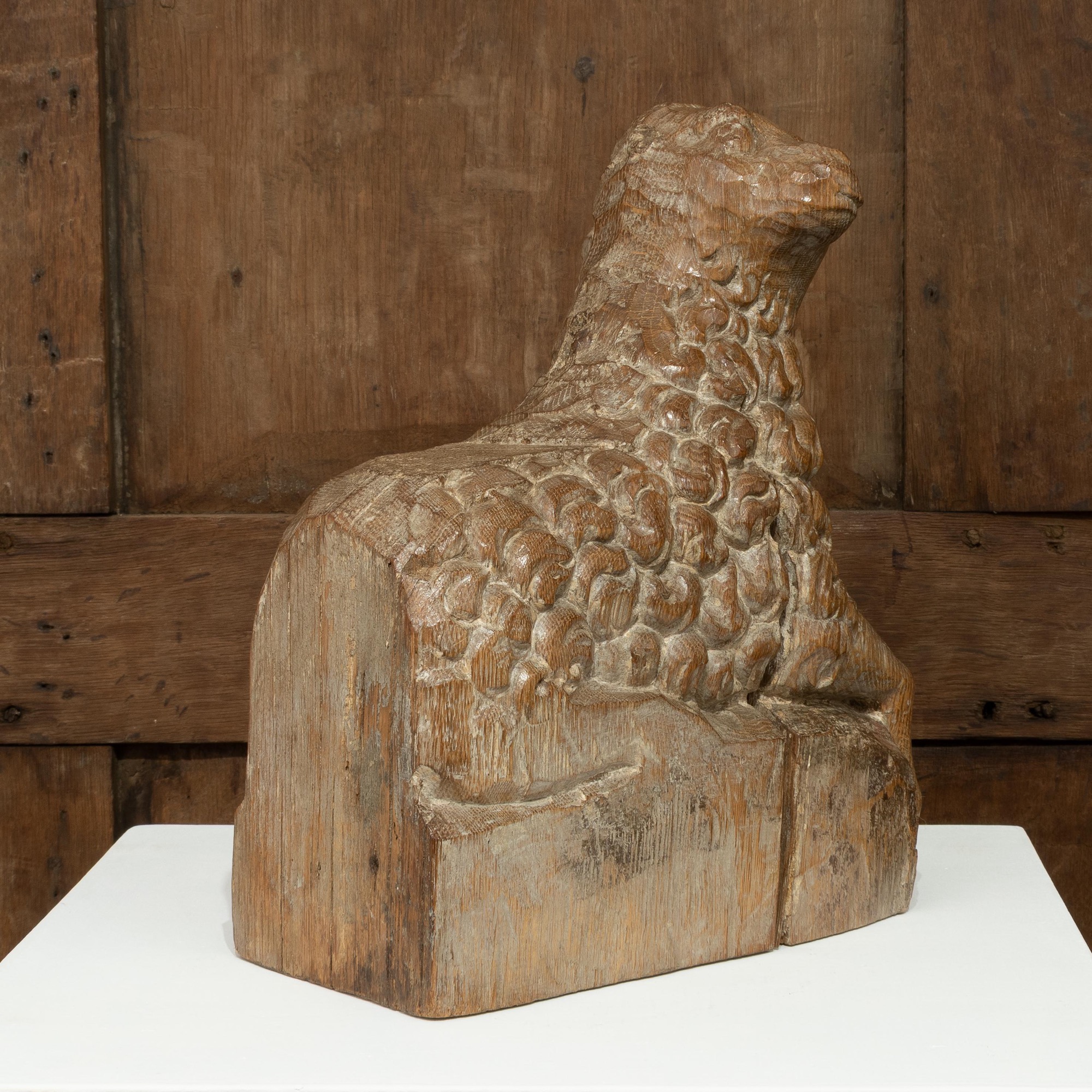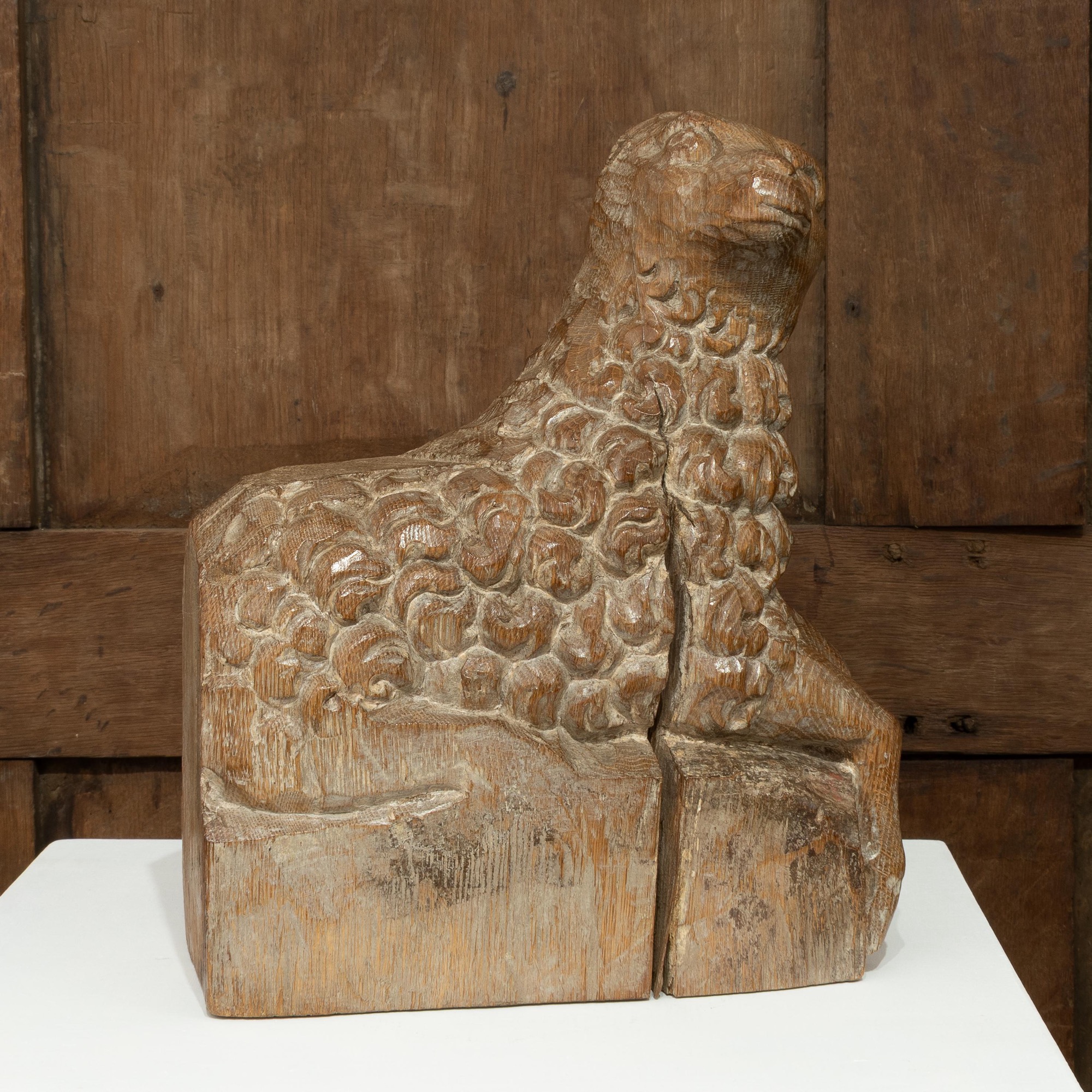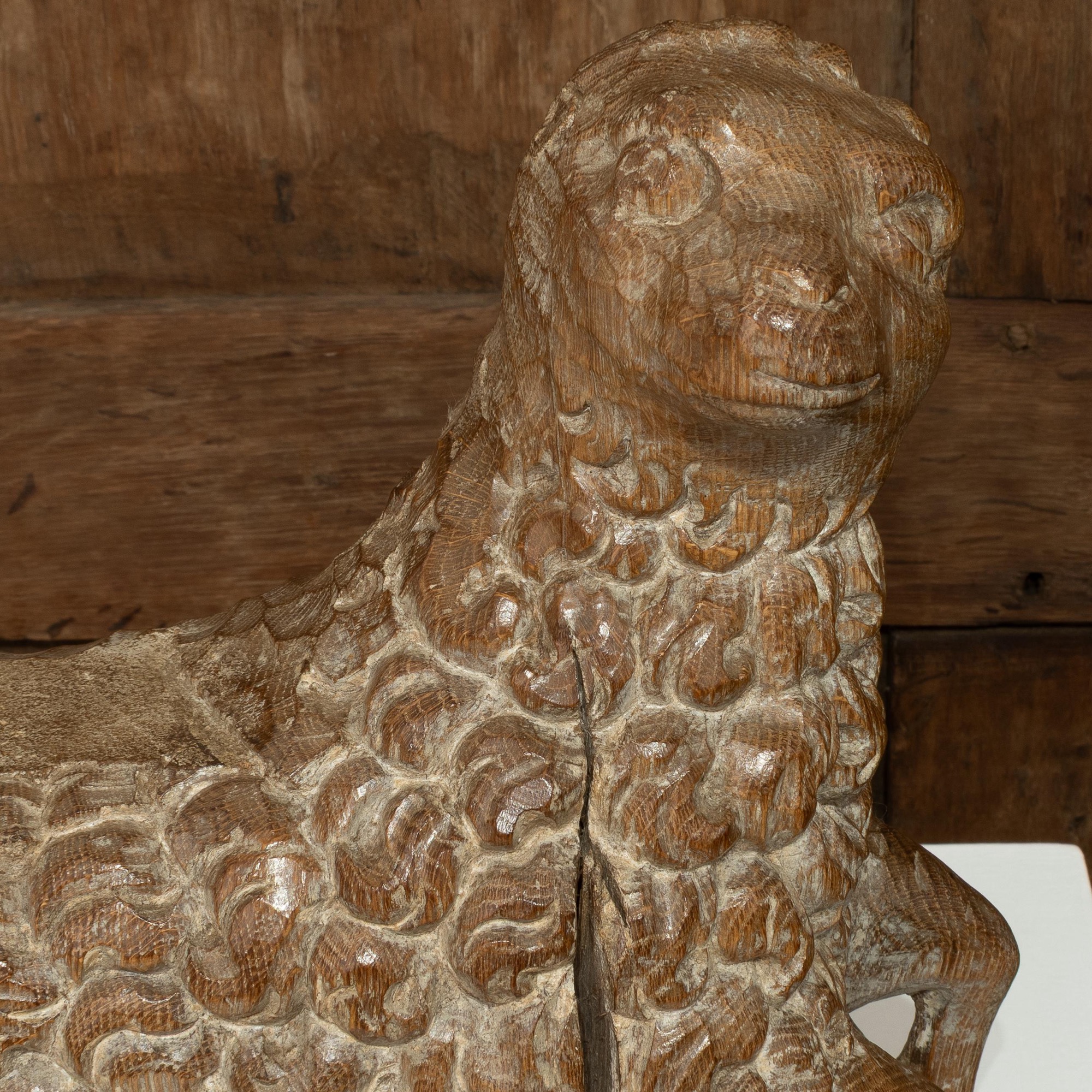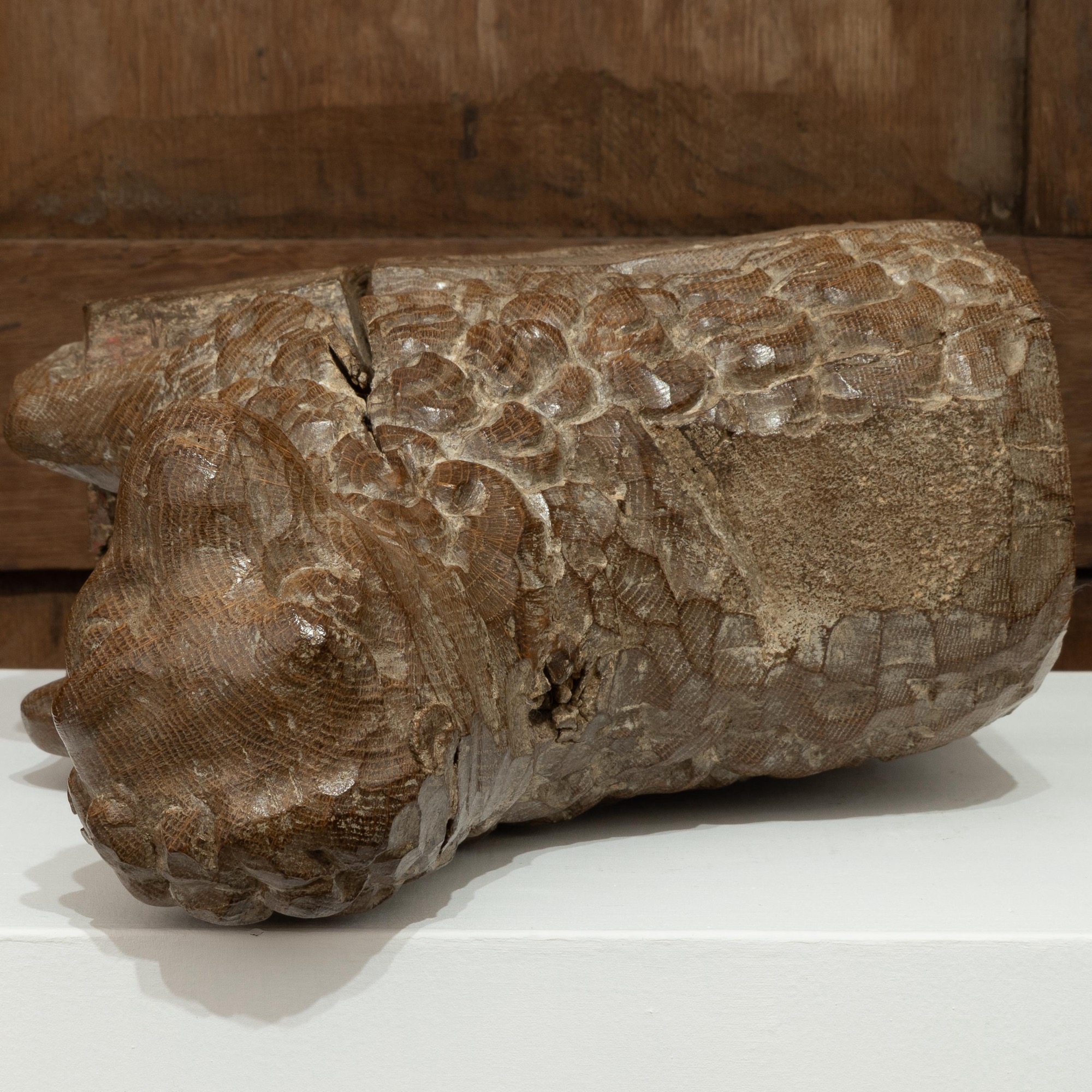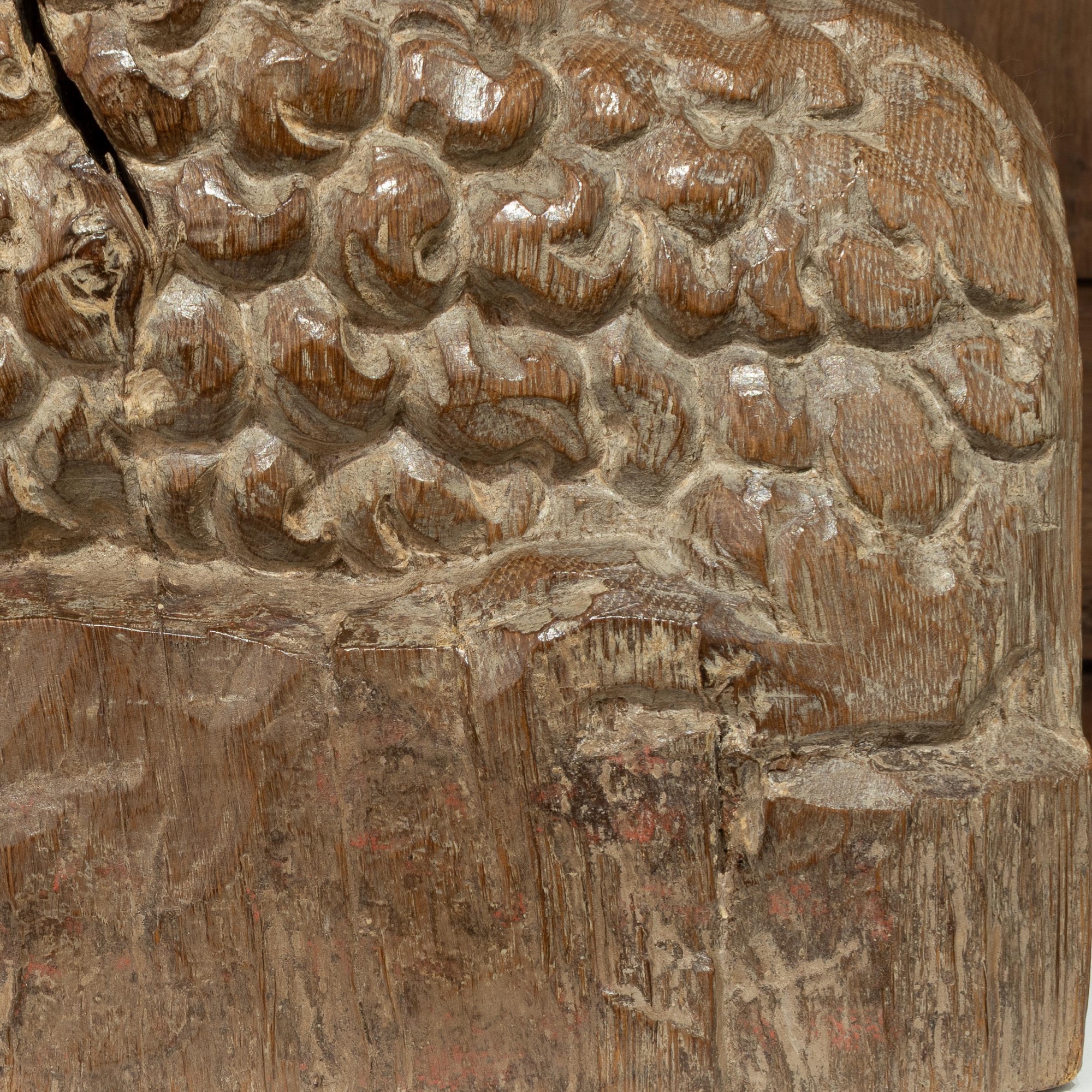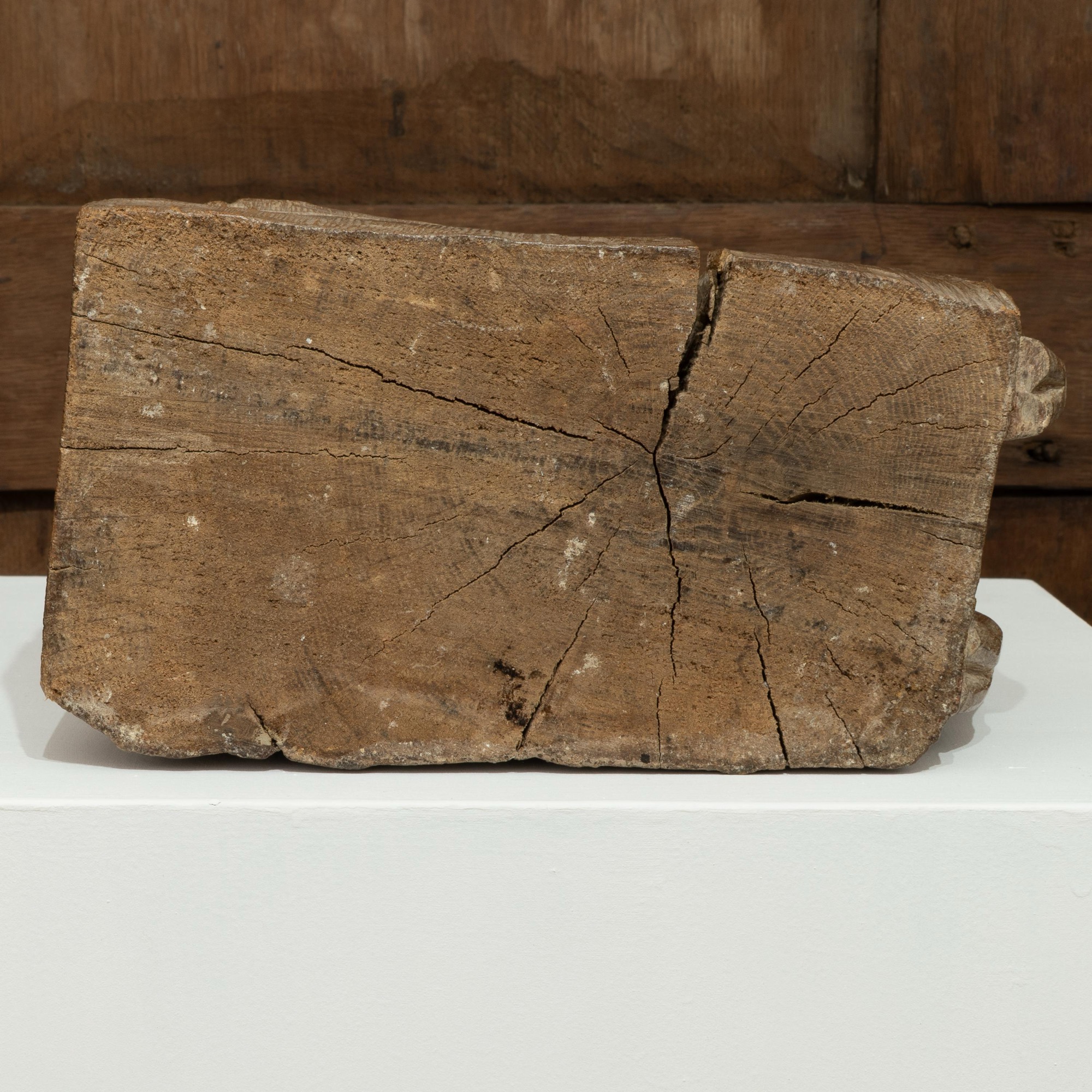A wonderful 15th century carved oak lamb, English, circa 1480
REF: 4997
Naturalistically carved, depicting its gentle nature, recumbent with both front legs hanging down the front of the plinth base, its head turned 90 degrees
The lamb is a Christian symbol, commonly representing St. Agnes and the Agnus Dei (Lamb of God)
It is reasonable to suggest this carving was originally a pew finial. Comparable animal finials are extant predominantly in East Anglian churches. For example, All Saints Church, Upper Sheringham, Norfolk and Holy Trinity Church, Blythburgh, Suffolk. However, here the subject, size and gaze orientation may suggest another former 'use'. Lambs are rarely depicted on stall-ends. Furthermore, the overall majority of animal finials are smaller in size. The subject, often more stylistically interpreted, generally faces forward in a fairly rigid pose. Here the lamb's small flat back, devoid of carved fleece, may suggest use as a base support, such as for a chest or font. See the V&A museum, London, for a carved couchant lion base, acc. no. 324-1889. Conversely, it may have once held a raised superstructure, rather like an elephant and castle, but in this case most likely a cross and flag (Agnus Dei). This may account for the angled head, devotionally turned in reference to the items carried on its back. However, there is no evidence of any former attachment and the fleece may have simply been shaved down for another purpose. Indeed the cross and pole predominantly rest in a lamb's front leg. See St. Michael's Church, Brent Knoll, Somerset for a bench-end carved with an Agnus Dei
- Height 28.5 cm / 11 "
- Width 23.5 cm / 9 1⁄2"
- Depth 12 cm / 4 3⁄4"
Category

